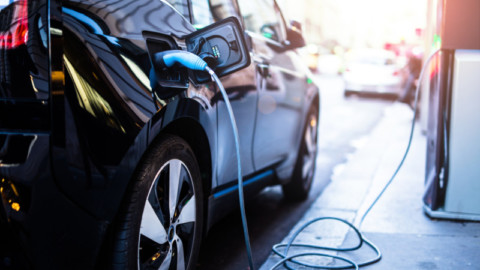Energy Networks Australia’s Energy Network Conference and Exhibition is a biannual event that brings together leading experts, members and stakeholders from within the energy industry. Held in Adelaide in late March, this year’s conference discussed the transformation of the energy grid to provide services and value that the consumers of the 21st century demand. One of the conference’s keynote speakers was Laura Sandys, Chair of the UK Government’s Energy Data and Digitalisation Taskforces and a renowned expert in energy and sustainability.
Ms Sandys’ illustrious career has led her to become a celebrated figure within the energy industry for her influential role
in shaping sustainability and energy policy. As well as her work with the UK Government, Ms Sandys is the Chair of the Green Alliance and has served as a non-executive director at SSE Transmission, Highview Power and more.
Her keynote address at the conference, From brawn to brains: planning from the future, looked at redesigning the energy system with a focus on customer engagement.
The energy system is changing from a top-down model to something much more complex, demand-led and digitalised, with new assets and actors that will drive change and networks at its heart. Ms Sandys believes that Australia has an opportunity to take the lead in this new world of energy – but action must be taken if this position is to be realised.
Transformation over transition
“I’m going to give you a little perspective about how one might want to look at the energy transformation. I prefer the word transformation to transition. And I talk about planning from the future. You guys in the networks world are absolutely crucial to this transformation. But you’re also in the world of quite long-term investments, of long-term strategies. In many ways, I would urge you to be less incremental and much more transformational in all your thinking.
“We have, in many ways, the old system, the politicians, the regulation…some of the industry sits in the middle, trying to manage, and in some ways, its mindset is sat in the past, but knowing that the future is almost here. I would say to South Australia, and other parts of Australia, tomorrow happens very, very quickly. It is a hockey stick, and it starts to emerge before you even see it. And you guys in the networks world, you’re going to have to manage it. You’ve been below the surface. Nobody’s really heard about you, but they’re starting to. Politicians are starting to take notice. Customers want connections. There’s a whole dynamic here which is putting you really in the spotlight,” Ms Sandys said in the opening of her keynote address.
A key point in Ms Sandys’ speech was the polarity between traditional ways of managing energy and what is needed for modern network transformation. Looking at Australia, the UK and other parts of the world, Ms Sandys dissected the current energy climate and shed light on the shortfalls of current systems, particularly in relation to consumers.
Ms Sandys referred to a quote from Octopus Energy Managing Director, Ari Sargent, who said, “Designed and built by engineers, bastardised by economists and marketers, the power industry continues to deliver one of the most successful consumer confusion programmes of all time.”
“Now, let’s try and rid ourselves of this confusion as we go forward. Everything is location-based. Thinking about Western Australia in comparison to what’s going on in Melbourne – there are particular, tailored, answers. No silver bullet is going to deliver you the one set answer. It is all about blending and system design.
“This is the new world of the consumer, the customer. And in particular, think about commercial and industrial consumers as well. Look at our regulator – moving from a very linear, a vanilla system design, to having to manage all these different moving parts. This is a very, very big culture change. And in the UK, we are moving from 400 people in the energy sector. I know there are 1,200 here today. This is a much bigger cohort. 400 people run the energy sector in the UK today. They all know each other’s golf handicap. What a surprise. And we are moving to 100 million actions and assets.
“If you think that every EV car can do three things, this is a massive change in complexity, in interrelationship, in segmentation. And customers are going to want to be serviced across this complexity,” Ms Sandys explained.
Encouraging consumer participation
Ms Sandys spoke to the challenges of trying to squeeze a new energy system designed around renewables into a paradigm designed for fossil fuels. Noting the difference between a system designed for commodities and a system designed for capital assets, Ms Sandys said energy customers need to stop being seen as simply a meter point.
“Blending assets is the future. You’ve got to start blending your electrons with long duration storage with batteries. You’ve got to start to deliver solutions, rather than commodities. In the UK, we’ve got massive problems with balancing rocketing. Distributed assets are undervalued in the sense of the whole system value. Demand is where the action is going to be in a renewable, weather-based system.”
Ms Sandys identified key drivers of change in the industry, including system gaps, new market players, new business models and processes, and new people and skills.
“When we look at the optimisation of the energy sector, we need to understand that we need different vectors, different timescales and different technologies. There isn’t one solution. There’s lots of them, and they need to be blended. Efficiency in the system is also important. The new market player, customers, demand is equal to supply. The physics tells us in electricity that that’s the case, markets tell us, but certainly in the UK, and I’m sure in Australia, customers have been more or less ignored. They are not an important part of the system, they are recipients. They’re now going to be participants.
“We are still obsessed with the levelised cost of electricity. And when one starts to look at that, it really isn’t reflective of this capital-based asset system that we’re moving to. Every time you put a demand option on the system, you reduce costs for everybody, not just for those people with those assets. And there are models for optimsation. We think we’re going through this extraordinary transformation as if it has never been done before. If we look beyond energy, we start to see that it has been done before,” Ms Sandys said.
Network interdependence
Ms Sandys used electric vehicles (EVs) as an example of how energy consumers have become active participants in energy networks.
She spoke of the need to adapt with these renewable technologies and to integrate them into the network, rather than seeing them as a threat to the system – because they’re only going to increase.
“In the UK, by 2035, the number of EVs on the system will be the equivalent of three nuclear power stations. So either those EVs could be a parasite on the system and we will have to build three nuclear power stations, or we have to integrate them into the energy sector and they become an asset. These are choices we’ve got to start making today. And like you’ve seen in South Australia, in terms of solar PV, you’re not going to stop these customers buying this stuff. You cannot tell people that they can’t have an EV car.
“I love the ideas that you’re doing in Western Australia, where you’re creating micro grids, independence and interdependence. Those are quite important balancing acts that are going to be really exciting. Are we rewarding customers appropriately? Customers are not getting that value of the displaced reinforcement, they’re not getting the value of the reduced curtailment costs. They are just getting a wholesale value. And that’s not going to be good enough if we really want to encourage them.
“And this is the potential – if one starts to think from the demand side, from the customer side, this could be a domestic customer, an industrial customer, you’ve got a whole range of different options. We need business models, we need retailers who actually understand how to unlock that and work with you as networks to build those propositions. It will optimise the system, but importantly, it will give you a social licence to spend money, because customers have actually become part of the system and are benefiting from it,” Ms Sandys said.
It’s clear that consumers will be an important part of transforming Australia’s energy sector, and have lots to offer energy networks and companies. Encouraging network interdependence strengthens energy for all, whilst balancing costs and achieving renewable energy targets.
Featured image: chayanuphol/Shutterstock.com
















